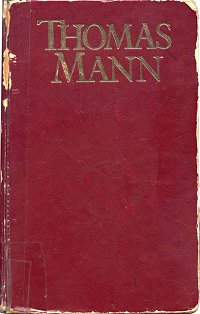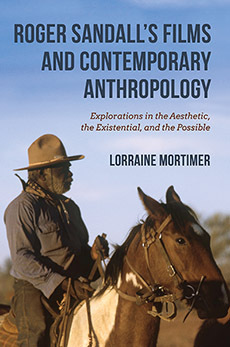from Mann and Nabokov to Sheik al-Hilaly
Quadrant, January-February 2007
Where are the sheiks of yesteryear, riding romantically over the dunes? Not in Australia. Here a burly Egyptian with an ugly turn of phrase recently set new records for ungallantry. Scantily clad Australian women, complained Sheik Taj el-Din al Hilaly, go around like “exposed meat” inviting rape.
Of course we all made a huge uproar. Unbelievable! Who asked his opinion anyway? The sheik calls himself a Mufti and thinks he represents Islam Down Under. But the man’s a brute who plainly hates western culture, who may have channelled funds to Hezbollah, and on top this he’s a security risk too. Go home sheik, go home!
This said, maybe he had a point all the same. It does seem nowadays that you can’t go to the newsagent to buy a paper, or the supermarket to buy a loaf of bread, without being surrounded by acres of glossy magazine erotica and exciting flesh. Not all of us would call it exposed meat, perhaps, but whatever it’s called it’s there—much of it little short of pornography.
To be honest, it seems to me that what the sheik was complaining about is a process that has gone on so long, and has now gone so far, that it has become the water we swim in and the air we breathe: a sexually heightened moral environment far removed from most normal human cultures in the past, where once forbidden instincts, thoughts, and desires, along with grossly exhibitionistic behaviour, are now increasingly treated as routine.
What has happened? Has a moral tsunami left our middle classes in ruins? What has been the corrupting role we ourselves have played in this state of affairs—every one of us that is, from the trash merchants at the bottom, to our most celebrated writers and artists at the top? Last December Kay Hymowitz wrote in the Wall Street Journal how when “Britney Spears jauntily revealed her waxed nether-regions to waiting photographers as she exited her limo,” this made her “the Internet smash of the season.” Hymowitz then underlined the naivete of the exhibitionism involved—the taken-for-granted security of the celebrity world where Britney Spears and Paris Hilton live:
They underestimate the magnetic force field created by intimate sexual information and violate the logic of privacy that should be all the more compelling in a media-driven age.”
The sheik and his followers live within that force field—as do we all. Recently too the papers have been filled with scandalised reports of paedophilia in a surprising variety of milieus, sometimes at high political levels. A cultural complaisance regarding men who like boys is not uncommon in the Middle East, particularly among the Bedouin, a fact that is doubtless well known to the sheik. But our subject today is not the comparatively innocent behavior of desert tribesmen; it is the more knowing depravity of modern decadence. What has made us this way?
Art and innocence
A hundred years ago the German author Thomas Mann made an interesting comment. Thinking about morality and its relation to the world of art, he wrote in his novella Tonio Kröger that “as the kingdom of art increases, that of health and innocence declines.” Many artists are estranged from life, he said, pursue goals hostile to life, and work continually to destroy the bourgeois world.
 Destroying the bourgeoisie was on many people’s minds at the time. Thoughts of bloody revolution were in the air. Mann however suggested that this would be wasted effort. Given time, and left to itself, capitalism would be more easily debauched than overthrown—destroyed by the values of the artistic bohemia it admired.
Destroying the bourgeoisie was on many people’s minds at the time. Thoughts of bloody revolution were in the air. Mann however suggested that this would be wasted effort. Given time, and left to itself, capitalism would be more easily debauched than overthrown—destroyed by the values of the artistic bohemia it admired.
Artists were exciting. Artists were sexually free. Above all art redeemed the bourgeoisie from the greedy sin of acquisitiveness. As Jacques Barzun has argued, it wasn’t long before art became a new religion, writers were revered as prophets, and as part of this understanding the bourgeoisie came to believe that the creators of fine literature and beautiful music also had beautiful souls.
This was nonsense. The so-called artist’s ‘gift’, wrote Thomas Mann in 1903, has dark roots in a poisoned psyche. “It is a very dubious affair and rests upon extremely sinister foundations.” The world should know that most artists today are sick in mind and spirit, a danger to decent people and heedless of the damage they cause. Plumbers and carpenters and other tradesmen are reliable friends. But artists are not. And because he understood this so clearly, the eponymous Tonio Kröger (the character of a writer in the book who speaks for Mann himself) was embarrassed to find complete strangers sending him letters of praise:
…I positively blush at the thought of how these good people would freeze up if they were to get a look behind the scenes. What they, in their innocence, cannot comprehend is that a properly constituted, healthy, decent man never writes, acts, or composes…”
Literature is not a calling, it is a curse, believe me! It begins by your feeling yourself set apart, in a curious sort of opposition to the nice, regular people; there is a gulf of ironic sensibility, of knowledge, scepticism, disagreement, between you and the others; it grows deeper and deeper, you realize that you are alone; and from then on any rapprochement is simply hopeless! What a fate!
The rise of the paederaesthetic
If art increases as innocence declines, is it a matter of cause and effect? In that case Mann would seem to be supporting Rousseau’s view in the First Discourse that literature and the arts are actually making the world worse. It certainly sounds like that. In Mann’s view the writer stands in permanent moral opposition, sceptical and ironic and relentlessly gnawing away. Worse still: having found a role in Art he may have lost a useful role in Life. The sense of being set apart in an alien moral universe is overwhelming:
You can disguise yourself, you can dress up like an attaché or a lieutenant; you hardly need to give a glance or speak a word before everyone knows you are not a human being, but something else: something queer, different, inimical.
Sexually inimical too—or sexually perhaps most of all. “Is an artist a male, anyhow? Ask the females! It seems to me we artists are all of us something like those unsexed papal singers. We sing like angels; but…” Here Kröger/Mann breaks off. Perhaps from weariness or boredom. Perhaps also because the angelic songs of yearning can hardly be named for what they are. Readers of Death in Venice will however take his meaning. In that story the ageing writer Aschenbach lusts after the youth Tadzio, and the ironic sensibility so ably described, the scepticism, the irony, the extreme narcissism, is combined with the mysterious obsessions of the paedophile—such obsessions being those of the author himself.
 Thomas Mann was a towering figure, intellectually in touch with the major currents of thought in his time, and to try and reduce him to his erotic interests would be ridiculous. His diaries for 1933 and 1934 reveal an observer whose understanding of European realities was second to none. Under the Nazis, he wrote, the Germans were becoming a “wretched, isolated, demented people, misled by a wild, stupid band of adventurers whom they take for mythical heroes.” In his entry for December 15, 1933, Mann reported Max Planck’s meeting with the Führer:
Thomas Mann was a towering figure, intellectually in touch with the major currents of thought in his time, and to try and reduce him to his erotic interests would be ridiculous. His diaries for 1933 and 1934 reveal an observer whose understanding of European realities was second to none. Under the Nazis, he wrote, the Germans were becoming a “wretched, isolated, demented people, misled by a wild, stupid band of adventurers whom they take for mythical heroes.” In his entry for December 15, 1933, Mann reported Max Planck’s meeting with the Führer:
Planck had requested a personal interview with Hitler regarding anti-Semitic dismissals of professors. He was subjected to a three-quarter-hour harangue, after which he returned home completely crushed.
He said it was like listening to an old peasant woman gabbling on about mathematics, the man’s low-level, ill-educated reliance on obsessive ideas; more hopeless than anything the illustrious scientist and thinker had ever heard in his entire life.
Two worlds coming together as the result of the one’s rise to power: a man from the world of knowledge, erudition, and disciplined thought is forced to listen to the arrogant, dogmatic expectorations of a revolting dilettante, after which he can only bow and take his leave.
Stephen Spender wrote of the diaries that “Thomas Mann is a monumental figure of our time. Reading these journals one feels that this monument is made of very hard, resistant, almost cruel material: but under the surface there is a human being who, together with Freud, was the greatest human being this century.”
Under the surface, too, unmentioned by Spender, was a pederastic interest that pervades his work and accurately reflects his inclinations. There is far more to his stories than that, and we should also note that he appears to have spent most of his life in chaste frustration. But with their adored ‘Hermes’ (and their slighted and ridiculous women) the tales he spun probably helped to disinhibit, to condone, and to legitimise predatory behaviour that mothers with children can only regard with dread.
Vladimir Nabokov once joked that if Lolitahad been about a man and a boy he would have had no American publishing problems—and that this was considered a joking matter is almost as revealing as anything else to do with the book. It would of course be ludicrous to suggest a direct connection between the works of these authors and what is now going on in the media and the streets. The self-conscious complexities of literary style alone would exclude all but the most determined reader from the experiences Mann and Nabokov publicise.
Still, there it is, an unbudgeable fact of literary history: two of the most distinguished writers of the 20th century, the most relentlessly cerebral and self-conscious writers, and the most academically admired and studied writers with whole shelves of earnest research devoted to their books, gave what I shall call “paederaesthetics”—the world of belief and feeling embodied in erotically idealised juveniles frankly treated as sexual prey—an important place. A widely used Simon & Schuster reader’s guide for college students from 1995 tells us that
Lolita, with its murder, paedophilia, sadism, masochism, and even hint of incest, clearly struck a nerve in our society by violating a number of its strongest taboos.
I’d have thought that any healthy society very reasonably should have taboos against murder, paedophilia, sadism, and incest. I am neither a prude nor a killjoy, yet rules against these things seem sensible to me. But the author of this student guide to Lolita apparently feels otherwise, suggesting, in accord with his antinomian principles, that the proper function of literature is to overcome such taboos. And perhaps in the case of paedophilia it has succeeded.
 Lionel Trilling discussed Lolita in Encounter in 1958. A critic of high moral seriousness, he made it clear that he wished to avoid a “correct enlightened attitude” or “to argue that censorship is always indefensible.” The stakes he said were high—too high for grandstanding about artistic values regardless of social costs. Detachedly considering Nabokov’s literary achievement, Trilling found that Lolitabelonged to a tradition of tales about hopeless erotic infatuations going back to medieval times.
Lionel Trilling discussed Lolita in Encounter in 1958. A critic of high moral seriousness, he made it clear that he wished to avoid a “correct enlightened attitude” or “to argue that censorship is always indefensible.” The stakes he said were high—too high for grandstanding about artistic values regardless of social costs. Detachedly considering Nabokov’s literary achievement, Trilling found that Lolitabelonged to a tradition of tales about hopeless erotic infatuations going back to medieval times.
Yet to know this literary fact was not enough. After every extenuating aesthetic argument had been considered, it remained the case that Lolita “makes a prolonged assault on one of our unquestioned and unquestionably sexual prohibitions, the sexual inviolability of girls of a certain age (and compounds the impiousness with what amounts to incest).” It might be true, he writes, that Juliet was fourteen when she gave herself to Romeo, and that we all now regard ourselves as sensibly clear-eyed about sex after the enlightenment of Coming of Age in Samoa.
But let an adult male seriously think about the girl as a sexual object and all our sensibility is revolted. The response is not reasoned but visceral. Within the range of possible heterosexual conduct, this is one of the few prohibitions which still seem to us to be confirmed by nature itself.
The sexualizing of everyday life
Not any more—or not in certain circles. Trilling’s is plainly a voice from the past. Today the debate is more likely to concern the acceptability of public copulation or pubic display. If it’s okay for Paris Hilton to make a video of herself having sex and to share it about in cyberspace, why shouldn’t Susie and Jim make one too? A glance at any newspaper shows how each libertine advance ratchets up another without anyone knowing where to stop.
A mass-market color supplement to Sydney’s Sun-Herald for October 29 2006 has the Hilton sisters on the cover, while inch-high yellow lettering shouts “Hedonism is Back, How to Party Celebrity Style”. The following 30 pages promote celebtrashery as a way of life.
Spectrum, a literary supplement of the Sydney Morning Herald edited and written largely by women, moves up a cultural notch and features a story about the female author “of a best-selling erotic novel”. This cites “a man who wishes women would make more noise in bed, and a divorcee in her 50s finding sex on the internet.” Reviews follow, a scene from the film Suburban Mayhem showing a chesty chick in thigh-high leather who, we are told, is “mistress of the SMS, and the local boys are her Praetorian Guard.” Reviewer Sandra Hall reports that “Wanna Fuck? is their call to arms” and that the young woman in question “usually obliges.”
Some relief from this brazen brutishness is provided by the writer Elizabeth Farrelly. Her essay “In search of a cure for paradise syndrome” questions the concept of illimitable human desires, and quotes Raymond Tallis’s thoughts on this subject. But only pages later there’s a full-color cartoon of a pole dancer getting her rocks off—if that’s the expression I need.
Not wanting to unfairly target a single Sydney newspaper I looked at The Weekend Australian Magazine for November 11-12. The cover is a bold come-on for an article asking if it is right or wrong for women teachers to seduce male pupils. No particular moral stance is adopted, and a number of court cases are examined. Yet by only the second paragraph we are treated to a vivid description of a 37-year-old woman who “wound up in the front seat of her car giving one of her boys oral sex… His friends thought he was ‘a bit of a legend’. He let them in on juicier details, like her glasses fogging up.”
Civility and common sense
Now then. Let us stop for a moment and consider. Put yourself in the position of conventionally respectable immigrants from some traditional culture—Sri Lankan Buddhists, Colombian Catholics, Eastern Orthodox from the Ukraine—who are used to certain standards of dress and appearance, who go to buy a weekend newspaper, and who are confronted with this sort of thing. We might also mention the good Rabbi and the pious Lubavitchers over my back fence, whose views of female decorum are in all important respects indistinguishable from the sheik’s.
What conclusion can they possibly draw from the daughters of billionaires fornicating on the web, cries for more noise in bed, shouts of “Wanna Fuck?” from movie stars, a female pole dancer engaged in public masturbation, and Australian women teachers who seduce their pupils and provide them with oral sex? Sheik al-Hilaly is a boor and a pest. He undeniably has a wider political agenda. But if these are not examples of white western women calling for action, what exactly are they?
Thomas Mann’s premonitions have come about. With the expansion of media mimesis in every direction the numbers of those who write and film and act and transform reality in a thousand more-or-less artistic ways has steadily expanded, the boundary between life and theatre has blurred, and what were once the values of a picturesque social fringe have taken over. Many of the people in our Theatrical Industrial Complex are very sick people indeed.
Getting the balance right between the animal and the civil has been a problem since civilization began. It hasn’t been easy. There has been a perpetual strain between the puritan tendency and the libertine, in China, in Japan, in India, and in the West as well. Some cultures and some eras veered to the voluptuary; some to the ascetic. Alexander Pope saw this perplexity as part of Man’s condition. Created half to rise and half to fall,
He hangs between, in doubt to act or rest;
In doubt to deem himself a God or Beast;
In doubt his mind or body to prefer;
Born but to die, and reasoning but to err;
Alike in ignorance, his reason such,
Whether he thinks too little or too much;
Chaos of thought and passion, all confused;
Still by himself abused or disabused…
For Europe’s educated classes the situation in the 18th century may have been as near as we are likely to come to a secular world where mind and body, thought and passion, were in some kind of balance—the various worlds of Hume and Rousseau, of Gibbon and Voltaire, of the Baronne de Warens and Madame du Chatelet—a world where both the conventional Johnson and the promiscuous Boswell could separately thrive and flourish.
Be that as it may, the usual way of dealing with this matter involved a common sense separation of realms. You didn’t publish entertaining accounts of oral sex provided by female teachers for their male pupils in family magazines. You didn’t have leading novelists advertising the joys of paedophilia. Though one should expect, in a free country, that such matters may be discussed and argued about—the pros (few) and the cons (many)—it has usually also been assumed that this would be constrained by a thoughtful choice of time, place, and occasion.
That’s where we seem to have gone wrong. An abandonment of the common sense rules to be found in hundreds of traditional cultures, and a foolish refusal to confine the sexual world to where it belongs, has led to its being indiscriminately mingled with everything else, 24/7. A burly Middle Eastern peasant in a nightshirt may seem an improbable source of moral guidance, yet in a way that’s what the outspoken sheik is—and he’s calling the shots as he sees them. But shooting the messenger is hardly the answer. Sheik Taj al-Din al-Hilaly and his followers are what they are. We are what we have fatefully become.

 An Australian writer living in Sydney, Roger Sandall is the author of The Culture Cult (2001), a study of romantic primitivism and its effects. His work has appeared in a number of places including Commentary, The American Interest, Encounter, The New Criterion, The American, Sight and Sound, Quadrant, Art International, The New Lugano Review, The Salisbury Review, Merkur, Mankind, Visual Anthropology, and Social Science and Modern Society.
An Australian writer living in Sydney, Roger Sandall is the author of The Culture Cult (2001), a study of romantic primitivism and its effects. His work has appeared in a number of places including Commentary, The American Interest, Encounter, The New Criterion, The American, Sight and Sound, Quadrant, Art International, The New Lugano Review, The Salisbury Review, Merkur, Mankind, Visual Anthropology, and Social Science and Modern Society.